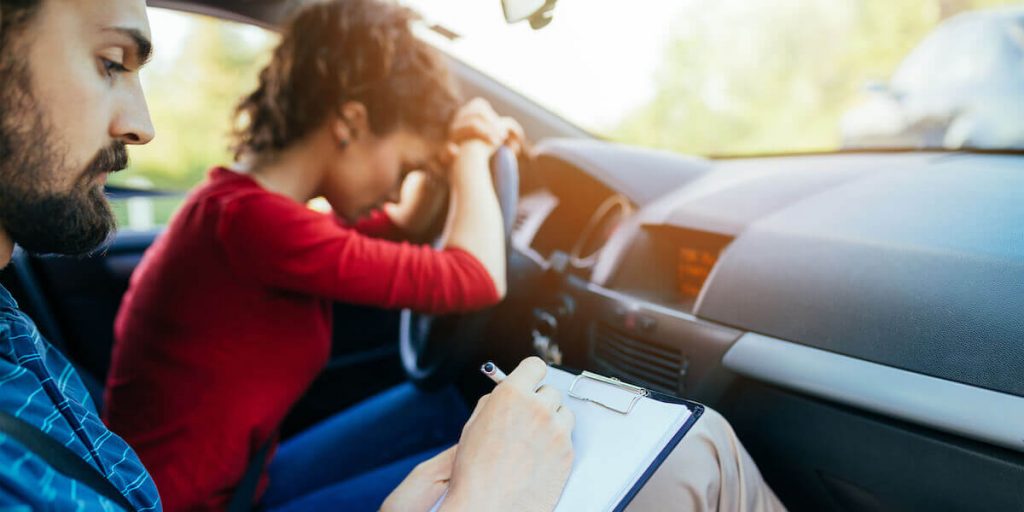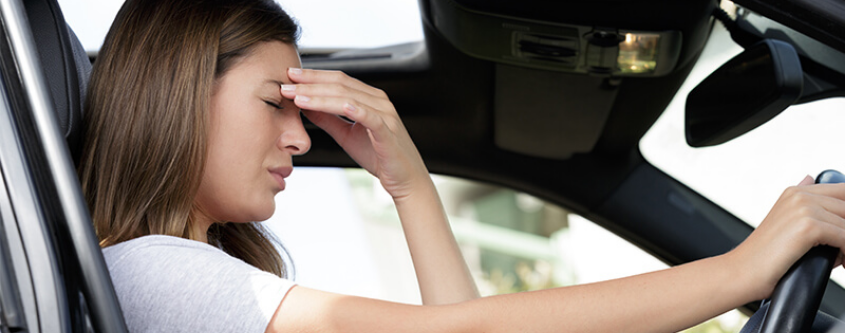12 Ways To Cope Up With Driving Anxiety
By Madinah on Jan 25, 2021Do you also experience anxiety whenever you are driving the road? Do not worry, you are not the only one who feels anxious while driving. In fact, the skilled drivers also suffer from anxiety upon encountering an emergency. One thing we can all agree on is that the anxiety or stress you face while sitting behind the steering is something different. Having an anxiety attack while you are on the road is extremely troublesome.
Where driving is a task that requires attention and focus, vigilance and diligence, it is also pretty stressful. Depending on the person, the signs of driving anxiety vary. You may feel jitters, body shaking, judgement cloudiness, intimidated, nausea, or supremely nervous. If you are a little anxious, it is good to keep you aware, alert, and warned. Well, if the condition is critical, you need to find a way out otherwise it will affect your driving skills.
Here are a few solutions that you can try practicing managing your driving anxiety.
Pick Your Safe Distractions
Distractions while driving can be a major safety issue but at the same time, it can soothe your nerves and make you calm especially if the distractions are of your interest.
If we talk about healthy options, you must choose to listen to your favorite music or a humorous podcast. Diverting your attention to the calming, relaxing songs will take your mind off of your avoidable stressful thoughts. You can opt for a comical podcast to help you manage your tension. With good music, you might forget about your fear.
Keep A Straight Focus
The anxiety you feel while driving is because you think you will hit somebody or somewhere, you will break the law, or be a threat to others. To cope up with this thought you need to bring confidence and trust in your driving skills. If you cannot do that, let us try keeping your eyes right on the roadway as it will ensure you that your complete concentration is on the road. Besides, focus on the road will divert your attention from your anxiousness.
Remember it will take time and enough practice so don't be so hard on yourself. You can begin by keeping a focus on sensory experiences you are having such as practicing a strong but gentle grip on the steering.
Stay Cool And Calm
If you have been experiencing dizziness, lightheadedness, or getting sweaty, you need to turn on the AC to keep your nerves cool. Or else, roll down the mirrors and let the fresh breeze make you feel calmer. As per the science, the cold air hitting the face and hands help comfort your anxiety and fear.
Control Your Emotions
If you let your fear take over, you will lose control completely and might become a danger for other road users. So, how about practising mindfulness? In simple words, we mean practice awareness.
If you succeed in controlling your emotions, you will be able to react to the driving conditions safely. It is possible through becoming self-aware of your stress and anxiety. Once you have skilled the tactic of suppressing your emotions, the anxiety will be under control very soon.
Let’s start practising mindfulness! Pay special attention to your stress triggers and resolve them one-by-one.
Accept The Truth
The reality says, as long as you run from your fear, you will never be able to get over it. We agree it is tougher than it seems but it is a way out.
Expect the condition to get worse because when you start driving, you will find that you can control the wheel harder and harder BUT, do not stop. Muster the courage and face your anxiety. With hard work, endless effort, and timely practice you will see how your anxiety will lose its strong hold.
Do Not Go For Bridges And Tunnels
Generally, anxiety starts when the driver feels stuck. The best option is to choose the routes that do not have any bridge crossing or tunnels. Passing through the tunnel or under the bridge can trigger your anxiety presenting the likelihood of getting trapped. Always opt for the easy ways with safer additional (escape) routes.
Give Thought To A Carpooling
Do you know what is carpooling? Having two or more passengers to have a pleasant talk with.
Yes, we know talking and driving doesn’t get along but getting engaged in a happy conversation can help the anxious driver lower his stress. Empty mind and being alone will definitely bring anxious thoughts.
Do Not Consume Too Much Caffeine
Where caffeine can make you hyperactive and more vigilant, it can start your anxiety as well. Try limiting the caffeine consumption or at least try not to drink caffeine right before you hit the road.
Another point to ponder is sugar level. It can also be your trigger (sometimes). Do not forget to grab a bite before getting behind the steering.
Control Your Breathing
Anxiety makes your heart and breathing rate spike and hyperventilation causes more anxiety. Consequences of consequences!
The solution? Take long deep breaths. It will not only lower your anxiety but also manage the heart rate. Controlled breathing helps the panic attack to pass. Practice this: Breath in for 5 seconds, hold your breath for 2-3 seconds, breathe out for 7 seconds straight.
Choose Safer Routes With Lesser Traffic
Seeing more traffic, and driving in crowded areas can only increase your anxiety. So, act smart and opt for the roadways that are not swamped with people or try not to go out during rush hours. Create an anxiety-free environment yourself. In short, choose boring driving routes. The more uninteresting driving gets, the lesser your anxiety will get triggered.
Desensitization
With time, desensitization has become one of the most effective tactics to manage driving anxiety. It starts from letting you deal with your fear. The driver will get exposed to its fears or the acts that trigger his/her anxiety, one by one. Remember, you cannot skip any part. It means you can level up the game only if you have come over the fear.
For instance, begin with just sitting in a driver’s seat and move to the next step of driving in an empty lot. For the next level, choose a low-anxiety location with minimal traffic. Gradually move up to driving on city roads.
Practice As Much As You Can
Endless practice is the key! The harder you practice, the more readily you will get over your anxiety and fear of driving. All we can say is, never give up. You will have major setbacks but be patient and keep working on with yourself. As much time you spend behind the wheel, the more comfortable you will become.
Final Verdict
Any of the above-mentioned techniques will not be ending your anxiety right away, but they might be reducing the severity of the anxiety or panic attacks with time. Driving lessons and a Defensive Driving Course are proved helpful, too.


